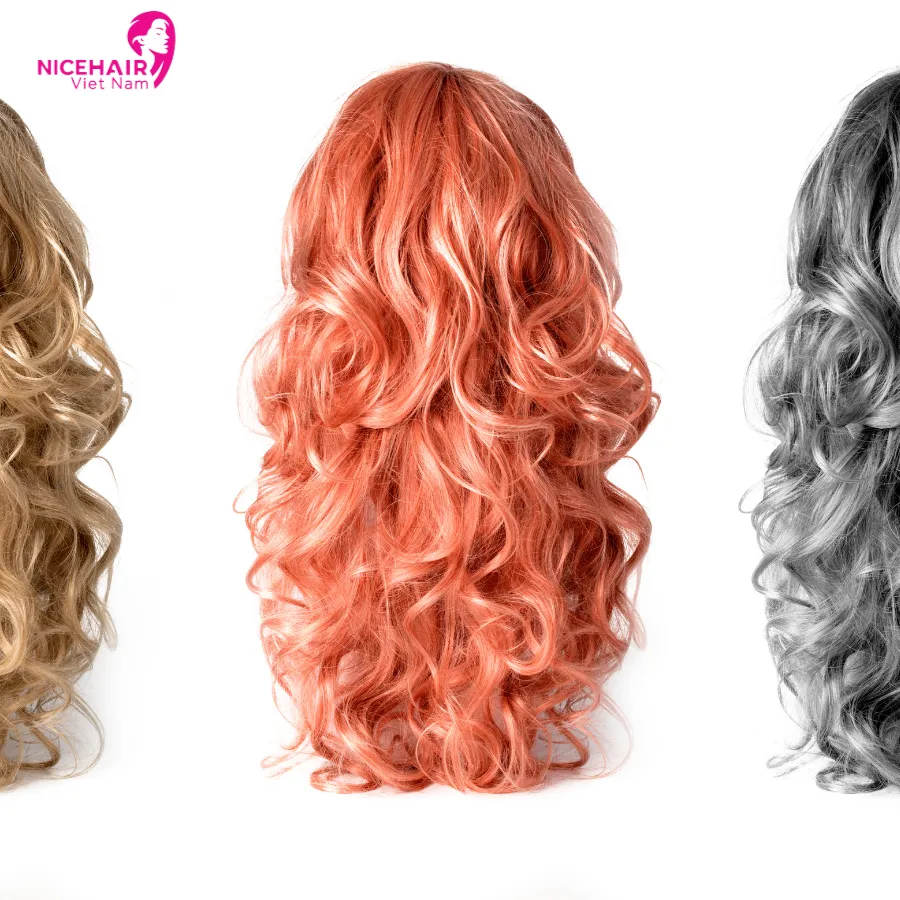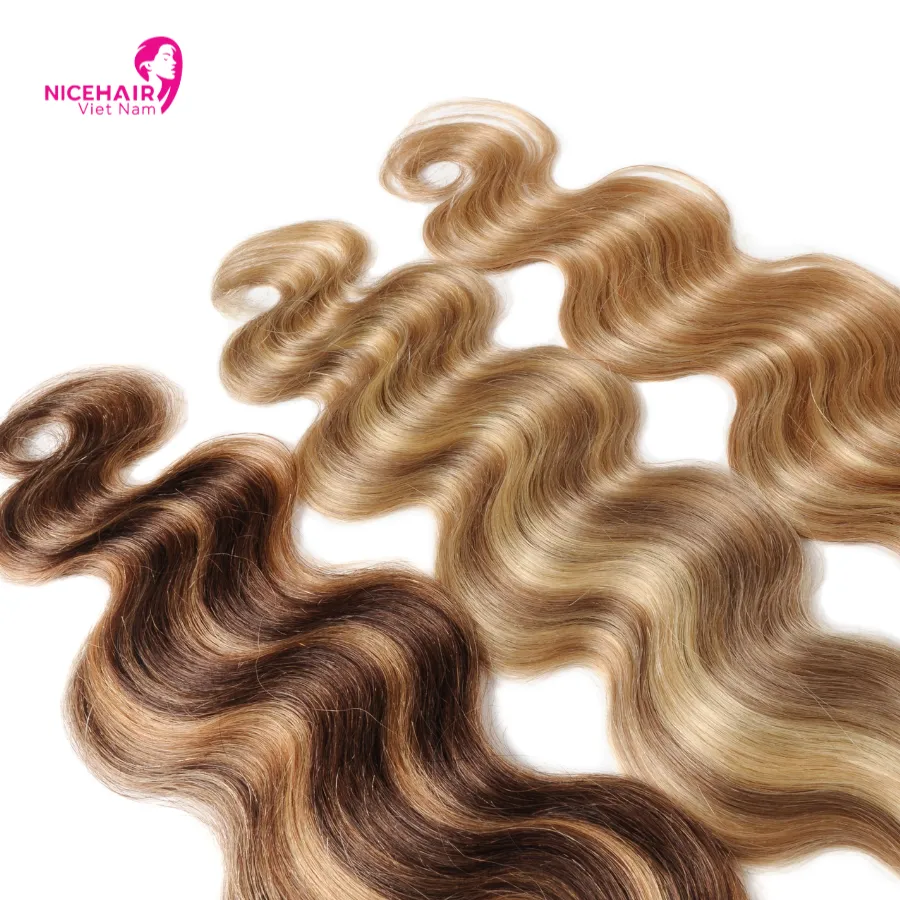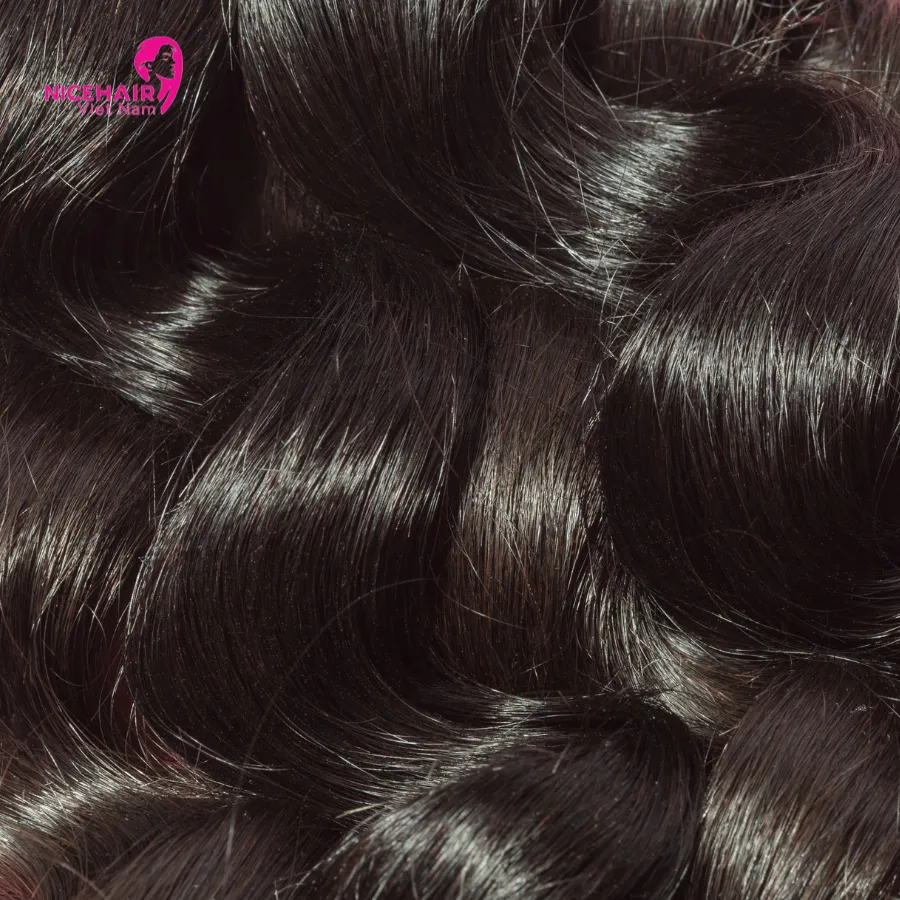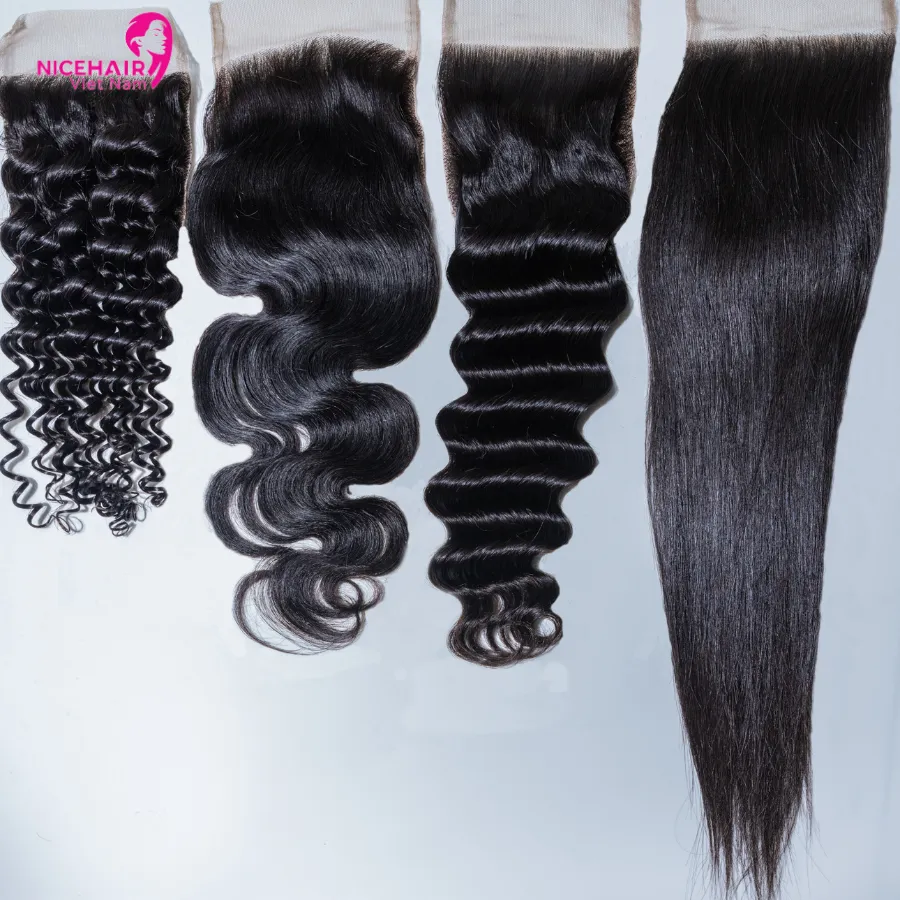Welcome to our comprehensive guide on importing hair from Vietnam to Nigeria. The international hair trade has seen significant growth in recent years, and Vietnam has emerged as a prominent source of high-quality human hair products. If you’re a business or an individual looking to enter this market and import hair from Vietnam to Nigeria, you’ve come to the right place. In this guide, we’ll walk you through the essential steps, regulations, and considerations to ensure a successful and seamless import process. From sourcing suppliers in Vietnam to navigating customs and logistics in Nigeria, we’ve got you covered.
What is Importing hair? Importing hair typically refers to the process of bringing hair products, particularly human hair extensions, wigs, weaves, or related hair accessories, from one country to another for commercial purposes. Hair importation is common in the beauty and fashion industry, where businesses or individuals source high-quality hair products from different parts of the world to meet the demands of their customers or clients.

The Process of Importing Hair from Vietnam to Nigeria
1st Step: Extensive Research
The initial stage in the hair importation process is conducting thorough research to find a reputable supplier. Finding the right supplier is the cornerstone of a successful import business.
- Identify Your Needs: Before you start your research, define your business’s specific requirements. Understand the types of hair products you want to import, the target market you aim to serve, and your budget constraints. This clarity will guide your search.
- Online Search: Leverage various online platforms to search for potential suppliers. Explore social media networks like Facebook, Twitter, and Instagram, which are often used by hair suppliers to showcase their products. Additionally, utilize search engines like Google to discover websites and online marketplaces where hair suppliers may be listed.
- Directories and Trade Shows: Consider consulting online directories of suppliers, both domestic and international. Furthermore, attend relevant trade shows, expos, and industry events where you can meet suppliers in person, evaluate their offerings, and establish direct contacts.
- Check Reviews and References: Delve into customer reviews and testimonials to gauge the reputation of potential suppliers. Positive reviews are a good sign of reliability, while negative reviews may indicate red flags.
- Verify Certifications: Ensure that the suppliers you consider hold the necessary certifications, if applicable, to guarantee the quality and authenticity of their products. For hair imports, this could include certifications related to hair sourcing and processing.
2nd Step: Contacting Sales Representatives

After the research phase, when you’ve pinpointed a selection of potential suppliers, it’s time to establish direct contact with their sales representatives. This step is crucial in confirming the legitimacy and credibility of the supplier. Here’s how to go about it:
- Initial Communication: Reach out to the sales representatives via email or the contact information provided on their website or social media profiles. Express your interest in their products and request more information.
- Detailed Inquiry: Be prepared to ask detailed questions regarding their products, production process, and business history. This demonstrates your commitment to due diligence and may help you identify the suppliers who are transparent and informative.
- Video Calls: Suggest or request video calls with the sales representatives. This provides an opportunity to visually inspect the products, verify their claims, and establish a personal connection. It can help you confirm that you are dealing with a legitimate supplier and not a scammer.
- References: Ask for references from previous clients or customers. Reputable suppliers should be willing to provide references that can vouch for their product quality and reliability.
- Negotiate Terms: During this contact phase, start discussing potential terms and conditions for your business relationship, including minimum order quantities, payment terms, and shipping arrangements.
3rd Step: Placing Your Order
Once you are satisfied with a specific supplier and their product offerings, the next step is to initiate the ordering process. This stage involves careful consideration and clear communication:
- Product Specifications: Clearly define the specifications of the hair products you wish to order. This includes aspects such as hair length, color, texture, and quality. The more precise your requirements, the smoother the order fulfillment process.
- Pricing and Payment Terms: Finalize the pricing structure with the supplier, including unit costs and any applicable discounts for bulk orders. Discuss payment methods and establish a clear understanding of deposit requirements and the schedule for final payments.
- Order Confirmation: Before proceeding, ensure that you receive written confirmation of the order, which should include all the agreed-upon terms, product specifications, and pricing. This serves as a reference and safeguards the interests of both parties.
The success of your hair importation venture greatly depends on the thoroughness of these initial steps. By investing time in research, engaging in direct communication with potential suppliers, and making informed decisions when placing orders, you set a strong foundation for a successful and trustworthy business relationship.
Cycling Through the Order Placement Procedure

When you embark on the journey of importing hair from Vietnam to Nigeria, understanding the intricate ordering process is paramount.
1st Step: Picking Your Order (Model, Color, Quality)
The choice of the hair model is a fundamental aspect of the decision-making process during the ordering phase. Your decision should be guided by factors such as market demand, your target audience’s preferences, and your overall business strategy. Different hair models, such as straight, wavy, curly, or other specialized textures, appeal to diverse customer segments. Take into account the cultural and regional preferences of your Nigerian market, as well as the trends in the hair industry. Understanding your customers’ needs and the prevailing fashion choices is pivotal in determining the right hair model to import.
The color of the hair products you select plays a significant role in your import strategy. You need to consider your target market’s inclinations, keeping in mind that the color palette is wide and varied. Traditional options like natural black and brown are always popular choices. However, you may want to diversify your offerings by including more unconventional colors such as blonde, red, or even colorful hair extensions. Conduct market research and evaluate customer feedback to gauge the demand for specific hair colors within your niche. Adapting your color selections to current trends and customer preferences is an effective way to stay competitive in the market.
Arguably, one of the most critical considerations in the importation process is determining the quality of the hair products. Quality impacts not only customer satisfaction but also your business’s reputation and long-term success. When assessing quality, factors such as hair source, processing methods, and durability come into play. Human hair sourced from reliable and ethical channels tends to be of higher quality, but it also comes at a premium. In contrast, synthetic hair may be more affordable but lacks the natural feel and longevity that human hair provides. Your decision regarding quality should align with your brand identity and target market. Do you want to position your business as a provider of premium, high-quality hair, or do you cater to budget-conscious consumers seeking affordability? It’s vital to communicate your quality standards clearly to your supplier to ensure they can meet your expectations.
As you navigate the process of selecting hair products for import, be prepared to adapt to changing market dynamics and consumer preferences. Engaging in ongoing market research, staying attuned to customer feedback, and maintaining flexibility in your product offerings will enable your business to thrive and remain competitive in the dynamic hair import industry. By making informed decisions in the early stages, you establish a solid foundation for a successful and sustainable hair import business in Nigeria.
2nd Step: Confirming Your Order (Invoice)

Once you’ve selected your desired hair products, it’s time to move forward by confirming your order. An invoice will be generated by your chosen supplier, detailing the agreed-upon terms, product specifications, and pricing. Carefully review this document and ensure it accurately reflects your selections before proceeding.
3rd Step: Making Payment (Agent, Crypto Currency)
Payment is a critical aspect of the importation process. Discuss the payment method with your supplier, which may involve using an agent or cryptocurrency for the transaction. It’s essential to follow secure and reliable payment procedures to protect your investment and guarantee a smooth process.
4th Step: Initiating Production (7-10 Days)
After payment confirmation, the production phase commences. Your supplier will work diligently to create the hair products you’ve ordered. This phase typically takes around 7 to 10 days, but it can vary depending on the complexity and quantity of your order. Throughout production, quality control measures are in place to ensure the products meet your specifications.
5th Step: Sending Videos and Pictures for Confirmation

As your hair products are in the production phase, the supplier may offer you the opportunity to gain deeper insights into the manufacturing process. This step involves sharing videos and pictures of the hair products as they progress through production.
Sharing visual updates during production enhances transparency in your business relationship. It’s a proactive approach by your supplier to build trust by allowing you to witness firsthand the stages of product creation. This transparency is a valuable assurance, particularly for those engaging in international business, as it mitigates concerns and promotes a sense of reliability.
The shared videos and pictures offer you the ability to verify that your order is being manufactured in accordance with your specified requirements. You can visually inspect product characteristics such as length, texture, color, and overall quality. This stage allows you to identify any deviations from the agreed-upon specifications and address them promptly.
In the event that any issues or discrepancies are identified during the visual inspection, you have the opportunity for timely intervention. This means you can communicate with your supplier to address concerns, request adjustments, or make clarifications before the production is complete. It’s a proactive approach to ensure that your order aligns with your expectations.
By providing visual updates, your supplier demonstrates a commitment to accuracy and quality. This proactive approach reduces the risk of errors or misunderstandings, which can be particularly beneficial when dealing with international suppliers where communication and oversight can be more challenging.
Ultimately, the goal of visual confirmation during production is to achieve customer satisfaction. By actively involving you in the process, the supplier is dedicated to delivering products that meet your requirements and expectations. Customer satisfaction is a cornerstone of a successful and sustainable business relationship.
This stage offers the opportunity for flexibility and adaptation. If, for instance, you discover that a different color or texture may better align with your market’s preferences, you can communicate this to your supplier during production. Such adjustments can enhance the marketability of the final product.
Keep comprehensive records of the shared videos and pictures, as well as any related communication. These records are not only helpful for your immediate order but also serve as a reference for future collaborations with your supplier.
Visual confirmation during production is a valuable practice that strengthens the bond between you and your supplier. It exemplifies a commitment to quality, accuracy, and customer satisfaction. By actively participating in the production process through visual inspection, you are better equipped to ensure that your imported hair products align with your market’s demands and your business objectives. This practice also reflects the reliability and professionalism of your supplier, essential elements in establishing a long-term, successful business relationship.
6th Step: Confirming and Shipping
Once the production process is complete and you’ve had an opportunity to review the products through videos and pictures, it’s time to confirm the final products. If you’re satisfied with the quality and adherence to your specifications, your supplier will proceed with shipping the products to Nigeria. This phase involves meticulous packing and addressing any necessary customs documentation for the international shipment.
Navigating the ordering process when importing hair products from Vietnam to Nigeria requires careful consideration and effective communication with your chosen supplier. By following these steps diligently and ensuring that each element of your order aligns with your business goals, you can pave the way for a successful and thriving venture in the hair import industry.
Guidelines for Placing Orders

1st Step: Making Paper Order
The initial step in the ordering process is to create a comprehensive paper order that outlines the specific details of the products you wish to purchase. This paper order serves as a crucial document for both you and your supplier.
- Detailed Order Specifications: Begin by clearly detailing the specifics of the hair products you intend to order. This includes information such as the desired length, color, and the quantity of each product. The more precise and accurate your specifications, the smoother the order fulfillment process will be.
- Quality Standards: In your paper order, you may also specify any quality standards that the products must meet. This could encompass factors like the source of the hair, the processing methods, and any other quality-related requirements that are essential to your business and customer satisfaction.
- Additional Notes: If there are any unique requests, special considerations, or specific instructions associated with your order, be sure to include them in your paper order. Effective communication is key to ensuring that your supplier fully understands your expectations.
2nd Step: Importing Data
Transitioning from your paper order to a digital format, such as an Excel spreadsheet, is a pivotal phase in the ordering process, bestowing several advantages in terms of organization, communication, and efficiency.
Transferring your meticulously prepared paper order into an Excel spreadsheet is an essential move that promotes accuracy and systematization. Within the spreadsheet, each product’s specific details, as outlined in your paper order, are methodically transcribed. This encompassing process includes the comprehensive recording of factors such as hair length, color, and the exact quantity of each product. By transferring this vital information into a digital format, you are ensuring that it is easily accessible, storable, and modifiable as needed. Excel, with its built-in formulas and data handling capabilities, is particularly well-suited for this task.
Depending on the nature of your business agreement and the specifics of your order, you may need to introduce additional variables into your Excel spreadsheet. These variables extend beyond the fundamental product details and may include crucial components such as shipping fees, any applicable discounts, or even gifts associated with your order. Incorporating these additional variables into your digital record enhances the completeness and accuracy of the order, while also facilitating transparent communication with your supplier. It’s important to ensure that these supplementary factors are integrated seamlessly and clearly in the spreadsheet, leaving no room for ambiguity.
Structured organization is at the heart of this digital transformation. As you migrate your order details to the Excel sheet, it’s imperative to maintain a clear and methodical structure. Each category, whether it’s related to product specifications, financial calculations, or shipping particulars, should be compartmentalized and distinct. This organization aids in efficient data retrieval and analysis, streamlining the process of monitoring and managing your order. Additionally, accuracy is paramount during this phase. It is essential to double-check the transcribed data, ensuring that all calculations are precise, and that no errors or omissions have occurred.
Incorporating these digital tools into your ordering process is a dynamic step that not only amplifies your ability to manage your order but also elevates your communication capabilities with your supplier. The structured and organized nature of digital records reduces the risk of misunderstanding or discrepancies, offering both parties a transparent and effective platform for collaboration. By diligently executing this transition, you strengthen the foundation of your business relationship, positioning it for efficiency and success in the intricate realm of hair importation.
3rd Step: Total Price
In the final leg of this ordering process, your attention turns to the vital task of calculating the comprehensive total price of your order. This encompassing figure represents not only the cost of the hair products themselves but also accounts for the associated expenses such as shipping fees and any other relevant costs.
Within your Excel spreadsheet, the total price emerges through a systematic calculation. This summation combines the costs of the hair products that you have carefully selected in accordance with your business objectives. Beyond this, the shipping fee is a key component that demands attention. Shipping fees typically span a range, typically between 6000 Naira to 9000 Naira per 1 kg of the total shipment. However, it’s essential to recognize that the precise shipping fee may exhibit variation, influenced by specific factors, including the size and weight of your order and the chosen shipping method.
Transparency is a cornerstone of this financial aspect of the ordering process. To ensure clarity and understanding for both you and your supplier, the Excel sheet you’ve compiled should offer a detailed breakdown of the costs. This transparency allows for a clear view of how the total price is composed, taking into account each individual expense. This comprehensive breakdown is a testament to your thoroughness and your commitment to an open and effective business relationship.
Before finalizing this critical step, it is incumbent upon you to dedicate time and effort to review and verify the calculated total price. This is an essential quality control measure that serves to confirm the accuracy of the figures and to ensure that all relevant costs and charges have been meticulously included. The goal is to detect and rectify any potential errors or oversights in the calculations, thus safeguarding the integrity of the order.
This final step, where you synthesize the financial aspects of your order, is pivotal to maintaining transparency, accuracy, and mutual trust between you and your supplier. It represents the last opportunity to refine the order’s financial details and to guarantee that both parties have a precise understanding of the costs involved. By conducting this step with diligence and precision, you fortify the foundation of your importation venture and forge a relationship grounded in trust and reliability.
The process of making paper orders, importing data, and calculating the total price is pivotal to the ordering process. It establishes a clear and organized method for specifying your requirements, maintaining accurate records, and understanding the financial aspects of your importation. This meticulous approach helps you avoid misunderstandings, facilitates effective communication with your supplier, and streamlines the ordering process for a successful importation venture.

Conclude
The guide to importing hair from Vietnam to Nigeria provides a comprehensive roadmap for a successful venture in the hair import industry. This journey begins with meticulous research to identify reputable suppliers, continues through the selection of hair products that align with your business objectives, and culminates in a transparent and efficient ordering process. As you navigate each step, it’s crucial to prioritize factors such as product quality, clear communication with suppliers, and adherence to legal and regulatory requirements. Establishing a strong business relationship with trusted suppliers is the cornerstone of a thriving hair importation enterprise. If you are interested, please visit the Website NICEHAIRVIETNAM or Fanpage for more details.

